The Top 10 tourist destinations around the globe
Each year, people around the world leave home searching for adventure or a change of scenery. While most tend to travel mainly within their own region, international travel has become a dynamic and profitable business. In 2017, the most recent year for which statistics are available, there were 1.32 billion tourist arrivals around the world, 84 million more than 2016, the highest increase since the 2008 global economic crisis.
Data about the number of tourists, what they spend, where they stay and for how long are accumulated by credit card companies, third-party booking agencies such as TripAdvisor, the World Atlas and the United Nations World Tourism Organization (UNWTO). The list presented here has been compiled by comparing the lists generated by these agencies for 2017, particularly the UNWTO’s data, to review the countries that received the most tourists and the most popular locations in those countries. The list includes useful tips, should you be inspired to leave home. Dollar amounts are U.S. currency, unless otherwise indicated.
1. France
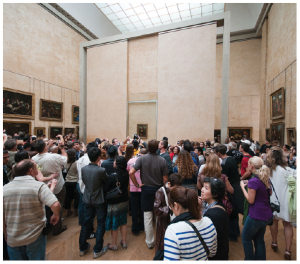
Ooh là là! France tops the list, with 86.9 million tourists in 2017. It’s no wonder — stunning scenery, history, sophisticated cities and amazing food! Among the most visited sites in France are Notre Dame Cathedral, the Louvre Museum, and the Palace of Versailles.
Henry James described Paris as “the greatest temple ever built to material joys and the lust of the eyes.” The city is a mélange of iconic architecture, history, grandeur and romance. Notre Dame Cathedral, on the east end of Île de la Cité, was built on the ruins of two churches; the cornerstone was laid in 1163. It was largely completed by 1250, but construction of porches and chapels continued for another 100 years. It is the most famous of medieval Gothic cathedrals, distinguished by its art and architecture, particularly the use of flying buttresses and the rib vault. As a symbol of Paris, it could not be more iconic.
The cathedral has deteriorated over the centuries, requiring extensive reconstruction. On April 15, 2019, a massive fire, possibly related to renovations, devastated the cathedral, destroying its roof, spire and woodwork, but its artifacts were saved. Paris has vowed to rebuild, which could take decades. The cathedral is closed, but the site will undoubtedly remain a place where people gather to pay their respects and reflect on the history that has taken place within its walls.
The Louvre Museum, housing the world’s largest art collection, began as a 12th-Century garrison fortress. It has expanded many times from the 16th Century, becoming the main residence of François I and ultimately a public museum during the French Revolution. Among its 380,000 objects are many of the world’s invaluable treasures, including Leonardo da Vinci’s Mona Lisa, the sculpture known as the Winged Victory of Samothrace, by an unknown artist, and Michelango’s Venus de Milo. The glass pyramid over the entrance was completed in 1989.
General admission is $20, but free for some. See the list at Louvre.fr. Reservations are recommended; book online.
Other must-sees in Paris include Sacré-Cœur, Montmartre, Tuileries Garden, Arc de Triomphe, Champs-Élysées, Musée d’Orsay, Place de la Concorde, and Champs de Mars. Each district, or, as they say in Paris, arrondissement, has its own flavour for cafés, restaurants and nightlife.
Fans of Les Misérables, engineering or unusual attractions may enjoy the Musée des égouts de Paris (Paris Sewers Museum) beneath the Quai d’Orsay on the Left Bank. The sewer was first built in the 13th Century by Philippe Auguste. Check dates before you go; the museum closes when the sewer is undergoing maintenance.
Take the train from Paris to Versailles, which is just on the outskirts, to see its exquisite palace. Of its 2,300 rooms, the most famous is the breathtaking Hall of Mirrors. Originally Louis XIII’s hunting pavilion, the Palace of Versailles was transformed by Louis XIV to become the centre of government in 1682. Successive kings put their touch on it until the French Revolution in 1789, when Louis XVI fled to Paris. It was never again a royal residence and became the Museum of the History of France in 1837. A guided tour can be had for $46 per person (it is closed Mondays).
2. Spain
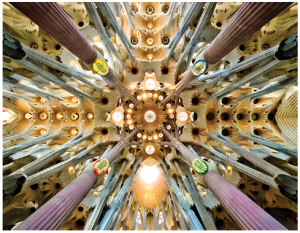
In 2017, Spain received 81.8 million visitors. Spain’s most popular destination is Barcelona, the capital of Catalonia, where visitors can enjoy Catalan culture, architecture, food, shopping and vibrant nightlife. Before you go, consider buying a Barcelona Card, the city’s official 3-in-1 tourist pass for transportation, museums and discounts. It comes in a range of prices depending on the length of your stay. barcelonacard.org
Barcelona’s most visited place is the grand Basilica of La Sagrada Familia. It was conceived in 1866 as an expiatory temple dedicated to the Holy Family. The cornerstone was laid on March 19, 1882. It has been under construction ever since and is expected to be completed in 2026. Visitors can tour the basilica for as little as $20. The Archdiocese of Barcelona holds an international mass at the basilica on Sundays and on holy days at 9 a.m. Seating is limited, so buy tickets well ahead of time.
At the centre of the old city is the Gothic Quarter, once the Roman settlement of Barcino, founded in 218 BC. The quarter’s narrow, winding streets lead visitors to an array of eclectic shopping opportunities, plenty of restaurants and bars and several peaceful squares. Stroll along Las Ramblas, a tree-lined pedestrian street that was once a dry riverbed, stretching through the heart of the city.
Discover Barcelona’s Roman history at the Museu d’Història de la Ciutat, the city history museum, comprising 13 locations around the city. Begin with MUHBA–Plaça del Rei, where you will travel back in time via elevator to Barcino, below street level. Traverse a series of footbridges to glimpse ancient Roman life before ascending to medieval Barcelona and the former royal palace.
No visit to Spain would be complete without taking in a flamenco performance at one of the country’s prestigious tablaos (flamenco venues). The passionate and sultry dance embodies all we think of when we think of Spain. There are options in every city, some including dinner, a free lesson, or a walking tour around a historic area with a flamenco show included.
3. United States
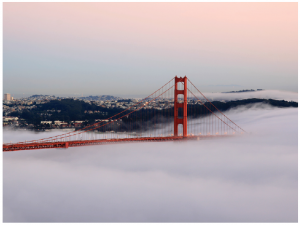
Bold, brash and beautiful, the U.S. has a wide range of land and cityscapes to suit any traveller; it attracted 76.9 million visitors in 2017.
With Times Square, Central Park, Broadway, the Metropolitan Museum of Art and Grand Central Terminal, New York City is a shoo-in as the biggest draw for tourists. Its most visited location is the Statue of Liberty, on Liberty Island.
“Liberty Enlightening the World” was proposed by Edouard de Laboulaye, who hoped this gift from France to the U.S. would inspire the French to create their own democracy. Constructed over eight years, it was presented to ambassador Levi Morton in Paris on July 4, 1881. It was shipped to the U.S., where the foundation and pedestal were being constructed, and revealed to the public on Oct. 28, 1886.
The statue has assumed several roles; she has symbolized freedom, mobilized troops, sold war bonds, advertised many products, welcomed immigrants and represented an idealized vision of the U.S. Whatever her political context, the Statue of Liberty is remarkable.
Visitors can climb 377 steps from the main lobby to the crown platform. Buy tickets in advance and wear comfortable shoes. The National Park Service, which is responsible for the statue, warns that the only authorized ferry service that can land at Liberty or Ellis Island is Statue Cruises; do not purchase tickets from street vendors. Expect to pay around $20. If you plan to visit, plan ahead by visiting statuecruises.com
For the second most popular place in the U.S., we cross the country to San Francisco, California, where tourists most often take in Golden Gate Bridge and Fisherman’s Wharf.
Golden Gate Bridge is probably what most people envision when they think of San Francisco. Spanning Golden Gate Strait, the suspension bridge, built between 1933 and 1937, connects San Francisco with Marin County to the north. It was a boon to workers in the Great Depression; men were hired if they could withstand the rigours of the job.
It is 2.7 kilometres, built in the Art Deco style and painted international orange. Its suspension cables contain 128,747 kilometres of wire, enough to circle the Earth three times with a bit left over.
Southbound vehicles pay a toll from $7 to $56, depending on vehicle size and payment method. Get tickets at goldengate.org. There is a welcome centre at the south end of the bridge in the Presidio.
Not-to-be-missed in San Francisco is Fisherman’s Wharf, where Italian fishermen once sang to communicate through the bay’s dense fog. Get there on one of San Francisco’s famous cable cars — the Powell-Hyde line or the Powell-Mason line.
The perfect end to a day of sightseeing is a meal of fresh seafood and a cold beverage on Pier 39 as you watch the sun set. A stroll along the pier leads past a marina to floating platforms where sea lions congregate, to the delight of tourists. You will smell them before you see them.
4. China
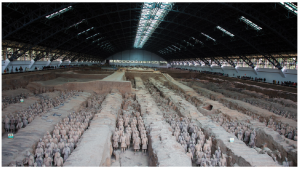
Since reform and opening 40 years ago, and with global exposure from the 2008 Summer Olympic Games, China has become a hot tourist market. The country received 60.7 million tourists in 2017, according to UNWTO, which sees China becoming the world’s most visited country by 2020. Before you go, check into visa requirements, which vary by destination and length of stay.
China’s rugged natural landscape contrasts starkly with the sleek skyscrapers of central Hong Kong, a Special Administrative Region of the People’s Republic of China. A trip through Old Town Central provides a taste of Hong Kong’s unique flavour, where ancient temples and authentic tea houses share real estate with fashion-forward concept stores and modern art galleries. Hong Kong’s history lives in Old Town: 150 years of colonial rule began on Possession Street; merchants have conducted business since the 19th Century on Pottinger Street; and the Dr. Sun Yat-sen Museum is dedicated to the man instrumental in establishing the Republic of China.
Beach enthusiasts can bask on southern Hong Kong Island, including Repulse Bay, among the city’s most expensive residential areas. The history of the area’s name has been lost to, well, history, though there are stories. One says the bay was once a base for pirates who were repulsed by the Royal Navy, though evidence is lacking.
If you crave nightlife, there are several districts where you can get your party on. Tung Choi Street, where locals hang out, has the best-priced drinks in town. Lan Kwai Fong is party central, with more than 90 restaurants and bars. SoHo, south of Hollywood Road, features chic bars, hip restaurants, boutiques and antique shops.
Elsewhere, two sites stand out. The Great Wall of China stretches more than 21,000 kilometres across northern China. It was built over a period of 2,200 years, beginning as state border walls during the Zhou Dynasty in 656 BC. During the Qin Dynasty (221–207 BC), Emperor Qin Shi Huang, China’s first emperor, connected existing walls for defence against invasion from the north. Expansion during the Han Dynasty (206–220 BC) protected the Silk Road. Most of what exists today was built or restored during the Ming Dynasty (1368–1644). Construction was forbidden during the Manchu-led Qing Dynasty of northeast China (1644–1911); after all, the wall was originally intended to protect against invasion by the Qing Dynasty’s Manchurian emperors.
Restoration of the Great Wall began under Chairman Mao in 1957 with the Badaling section, with others restored to benefit tourism, mostly the sections near Beijing. Each season offers its own views, but it is notoriously crowded during peak times. Avoid the first week of May, a “golden” travel week. There are hotels and restaurants nearby or you can travel there from Beijing in about two hours.
Perhaps the most intriguing attraction in China is the Museum of Qin Terracotta Warriors and Horses, 45 kilometres east of Xi’an. The site, the most significant archeological excavation of the last century, was discovered by farmers digging a well in 1974. Life-sized soldiers in full battle dress with their horses have guarded the tomb of Emperor Qin for 2,000 years. Work at the site continues with more than 8,000 pottery soldiers, horses, chariots, and weapons unearthed from three pits.
A tour package, including transportation from your hotel in Xi’an, an English-speaking guide and admission to the museum and Qin Shi Huang Mausoleum park, begins at $75 per person in the spring and fall and $85 in the summer.
5. Italy
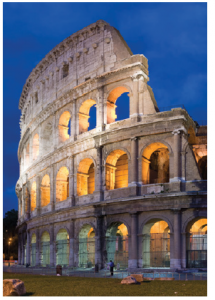
In 2017, Italy attracted 58.3 million tourists. Italy’s history is, in many ways, the history of the world. Rome was the capital of the emerging Roman Empire whose law, culture and technology laid the cornerstone of Italy and Western civilization.
Legend says Rome was founded in 753 BC by Romulus and Remus, twin sons of Mars who were raised by a she-wolf. The legend is represented by a 5th-Century BC bronze statue, the Capitoline She-wolf, which has been in the Musei Capitolini in Rome since 1471.
Roman sites are among the most popular with visitors to Italy, in particular the Colosseum and Palatine Hill, which are in close proximity to the Forum, the heart of Rome from the 7th Century BC to 283 when fire destroyed it. Tours of all three sites can be purchased as a package from $23 per person. You can “skip the line” for a starting price of $57.
The Colosseum was built in AD 72–80 on the site of Nero’s Golden Palace, built after Rome burned in 64. It is the biggest amphitheatre ever built, with 80 entrances and seating for 50,000. For four centuries, it hosted grand entertainment, much of it bloody, including mock naval battles, animal hunts, public executions and gladiatorial games.
It was abandoned as costs of putting on spectacles rose, public tastes changed and weather took its toll. For centuries, it served as a marble quarry for building projects, including St. Peter and St. John Lateran cathedrals, the Palazzo Venezia and fortifications along the Tiber River. By the 20th Century, nearly two-thirds of the original site, including all the seats (marble and wood) and decorative elements, had been destroyed by reclamation, weather, neglect, vandalism and natural disasters like earthquakes. Restoration efforts in the 1990s continued to 2017.
Walk back in time on the Palatino, one of the oldest parts of Rome and the most central of Rome’s seven hills, overlooking the Roman Forum. Archeological evidence puts the first habitation of the Palatino in about 830 BC. Romulus is said to have killed his brother there. The site includes the Criptoportico Neroniano, the tunnel where Caligula is thought to have been murdered.
Italy’s second most visited site is Pompeii, near Naples. The ancient Roman city was nearly destroyed when Mount Vesuvius erupted in 79. Most of the area’s 20,000 inhabitants fled, but about 2,000 people were smothered as millions of tons of volcanic ash buried the city.
Pompeii lay hidden until 1748, when a group of explorers began digging for artifacts. They found the city preserved by the ash, its buildings intact, household objects littering the streets and the skeletons of its citizens lying where they fell.
The excavation, which has uncovered 170 acres, has been ongoing for nearly 300 years, fascinating tourists and scholars as much today as in the 18th Century. Guided tours of the city and volcano leave from Naples and Sorrento daily, with prices from $77–$129/person depending on the time of year.
6. Mexico
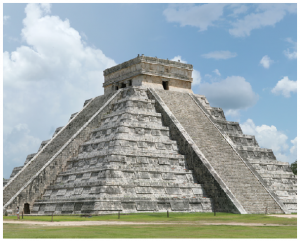
Modern Mexico is the most populous Spanish-speaking country in the world. It is a popular tourist destination, visited by 39.3 million people in 2017, drawn by the weather, beaches, resorts, food, music, history and its welcoming people. Most of its visitors are from the U.S. and Canada, but arrivals from Europe and Asia are increasing.
Mexico City, the country’s most visited location, has plenty to offer tourists; tour packages at a range of prices are just a Google search away. Its most popular attractions are in the Centro Histórico de la Ciudad, the historic city centre, surrounding the Zócalo, the Plaza de la Constitución (Constitution Square), where the country’s first constitution was proclaimed in 1813. Once the hub of Aztec society, it is the heart of Mexico City, dominated by the National Palace, Metropolitan Cathedral and the Templo Mayor Museum, where you’ll find the ruins of the Great Temple Tenochtitlán and its Aztec relics. The museum is closed Monday; admission is free on Sunday and 75 pesos/$4 otherwise.
To see the best of the city, the Centro Histórico is a good home base, as is the affluent Polanco neighbourhood. The area offers accommodation to meet any budget; TripAdvisor recommendations include luxury hotels such as the Gran Hotel Ciudad de Mexico, mid-range hotels such as the Historico Central, and budget hotels such as the One Ciudad De Mexico Alameda. Restaurants, shops and nightlife abound.
Outside of Mexico City, ancient ruins tell the story of Mexico’s history and dazzling beaches invite visitors to loll in the sun. On the Yucután Peninsula, the stepped pyramids and temples of Chichén Itzá, a popular tourist site, with its iconic Temple of Kukulkan (El Castillo, or castle), has been named one of the New Seven Wonders of the World. It comprises two cities built by the Maya and the Toltecs, and was a religious and ceremonial site as well as a sophisticated urban centre and trade hub. In the 15th Century, after many prosperous centuries and absorbing other cultures, the city’s inhabitants left, abandoning Chichén Itzá to the jungle. They left brilliant works of art and architecture, but no record explaining their departure.
Playa del Carmen is a distinctive beach town, with a beach equal to others on the Yucután, but with nightlife and hotel culture that blends the style of European and American destinations with traditional Mexican options. There are plenty of activities to keep you busy, including snorkelling, parasailing and ziplining at parks such as Xel-Há and Xenses.
7. United Kingdom
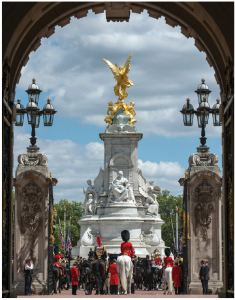
The United Kingdom drew 37.7 million tourists in 2017. London is its most popular destination. The city exudes history; it began as a Roman military storage depot when Rome invaded in 43. The East Anglians burned it to the ground in 61 to rebel against Roman rule. Rebuilt in 100, it had paved streets, shops, businesses, public baths, simple homes and elaborate estates. Some of the stone wall that surrounded it still exists.
London’s most visited places are the Tower of London, built by William the Conqueror, and Buckingham Palace.
The Tower of London’s history is gruesome. It saw several assassinations and, although built as a palace, was used to imprison and torture individuals accused of various crimes. Many were executed, most famously Anne Boleyn and Catherine Howard — two of Henry VIII’s wives — and Lady Jane Grey, hapless victim of a political plot, who had the shortest reign in British history (nine days.)
The tower has stored the Crown Jewels since 1661. They comprise 23,578 gemstones set into St. Edward’s Crown, the Sovereign’s orb, the Jewelled Sword of Offering, the Sovereign’s Sceptre and Rod, and the Imperial State Crown. They are used by the queen for important ceremonies, noted by an “in use” sign to advise visitors. Tower admission includes the White Tower where you can try shooting arrows, wielding a sword and firing cannons.
You can’t visit London without seeing Buckingham Palace, the official London residence of Britain’s monarchs since 1837. It was originally Buckingham House, purchased in 1761 by King George III for Queen Charlotte as a family home. State rooms are open to the public for 10 weeks each summer and select dates in winter and spring. Book ahead through the Royal Collection Trust. www.rct.uk/
In Scotland, the most popular attraction is Edinburgh Castle, built in the 13th Century and much besieged throughout its history. Today it is a military station and the site of the Scottish National War Memorial. It is also home to the Honours of Scotland (Crown Jewels, the oldest in Britain), the ancient Stone of Destiny and St. Margaret’s Chapel, the oldest building in Edinburgh. Advance tickets can be purchased online for less than $23. It also hosts the Royal Edinburgh Military Tattoo each August; ticket prices vary.
(edinburghcastle.scot)
While Wales has historic sites, such as Caernarfon Castle, and lovely cities, its natural beauty may be its main attraction. National parks, including Snowdonia and Brecon Beacons, are paradise for hikers, with unspoiled vistas and that clarity of air only found where the humidity, temperature and elevation are just right.
Northern Ireland, once avoided by tourists, has become interesting in part for representing Westeros in a certain television series. The Giant’s Causeway is an intriguing natural feature comprising polygonal columns of basalt created by a volcanic eruption 60 million years ago. If your taste runs more to the manmade, Titanic Belfast honours the RMS Titanic and Belfast’s maritime history. Find it at 1 Queens Rd.
While in the U.K., take public transportation with a Visitor Oyster Card. Buy it online in advance in several currencies. visitbritainshop.com
8. Turkey
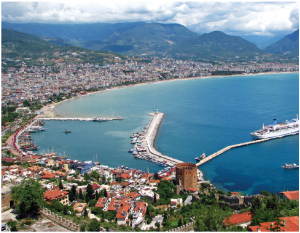
With its coastline edging the Mediterranean and Aegean seas, Turkey attracted 37.6 million tourists in 2017. Its seaside resorts, historic sites and ancient monasteries give visitors much to enjoy.
Turkey’s history presents us with the Medieval Crusades, the Roman Empire, Alexander the Great, Homer, the city of Troy and the Trojan War and Stone Age settlements built in 7500 BC. Its most popular city for tourists is Antalya, but Istanbul, the capital, is also a draw for its museums, historic sites and bazaars, especially the Grand Bazaar where shoppers can find ceramics, carpets, copperware, Byzantine-style jewelry and more.
Antalya ushers visitors onto the Turkish Riviera, also called the Turquoise Coast. Kaleici is the historic walled centre of Antalya and the heart of the modern city. You can get around easily and inexpensively by tram or walk through its maze of streets, traditional teahouses, souvenir shops and historic landmarks, such as the Kesik Minare (Broken Minaret) or the Mehmet Pasa Mosque. (When visiting a mosque, women require a head scarf.) Entry to Kaleici is through Hadrian’s Gate, which opens onto an area of restored Ottoman-era buildings, open-air cafés and small shops. Wear comfortable walking shoes as there are steep hills and uneven cobblestones.
Nearby Duden Waterfalls is a good day trip, especially if combined with a visit to the Antalya Aquarium. Duden is a group of falls in the Duden River, which flows from the Taurus Mountains to the sea. The upper falls are in a valley park with restaurants, walkways and picnic areas. A spiral staircase ends in a cave behind the waterfall. The lower falls are best seen from the sea as they rush over the cliffs. The Antalya Aquarium features more than 200 sharks and the world’s longest aquarium tunnel.
Fifteen kilometres from Antalya lies the ancient city of Perge, which dates back to the 12th or 13th Century BC. The site includes the ruins of social and cultural buildings — a theatre, stadium, gymnasium, Roman baths — and an agora and columns that lined the streets.
Turkey’s beaches are perfect for taking in the Mediterranean sun. Lara Beach, 16 kilometres east of Antalya, has several lovely resorts and a long sweep of sandy beach. It is categorized as a Blue Flag beach, which means clear water and a clean beachfront.
West of Antalya and at the end of the city’s tram line is Konyaalti Beach, with miles of rocky or pebbly beach, many restaurants and cafés and a backdrop of the Taurus mountains and cliffs on either end.
9. Germany
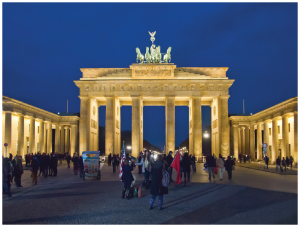
Tourists from all over the world visit Germany — 37.5 million in 2017. It has always been a powerful nation and, in its ancient history, resisted Roman occupation in the central region; Roman forces were only able to occupy lands up to the Danube River in the south and the Rhine River in the west.
Germany’s most visited areas are the cities of Berlin, Munich and Hamburg. Each offers a particular glimpse of Germany.
Germany and Berlin, the country’s capital and largest city, were divided after the Second World War, ideologically and physically, by the conferences of Yalta and Potsdam. The east was given to the Soviet Union and the west to the U.S., Great Britain and France. American capital aided West Germany’s recovery and transformation to the Federal Republic of Germany while the Communist east became the German Democratic Republic.
Berlin, entirely in the Soviet sector, was similarly split. In 1961, the Communists built a concrete wall through Berlin to keep people from defecting, ultimately harming East Berlin’s recovery while West Berlin thrived. In 1989, international pressure on Russia brought the wall down, along with the collapse of the U.S.S.R., and the city was unified.
Today, the differences between east and west have diminished but may still be evident to a keen observer. Parts of the wall and Checkpoint Charlie, where people could transit through the barricade, remain powerful symbols of the Cold War. To see the wall, visit the open-air East Side Gallery on Mühlenstraße or the Gedenkstätte Berliner Mauer (Berlin Wall Memorial) on Bernauer Straße on the west side. The Checkpoint Charlie guard house and museum are on Friedrichstraße.
The iconic Brandenburg Gate was built in 1791 by Frederick William II, and modelled after the Propylaea in Athens. Its 12 Doric columns create five portals, its reliefs and sculptures relate to Heracles, and on top is a statue of the goddess of victory. The Gate became symbolic of a divided Germany when it was closed off with construction of the Berlin Wall. It was reopened in 1989.
When you’ve had your fill of history, enjoy shopping on Kurfüstendamm, Berlin’s most popular shopping boulevard, or visit the Berlin Zoo, dedicated to supporting biodiversity.
Munich is the capital of Bavaria, a stunning area with fairy-tale castles perched on rugged peaks above dark forests and picturesque timber houses nestled in green valleys. Munich is best-known for its beer and Oktoberfest, a traditional two-week festival that ends on the first Sunday in October. Prosit!
Start your tour in the Altstadt (Old Town), which includes the Marienplatz, a public square that has long been the heart of the city and is the hub for public transportation. Gothic buildings surrounding the square appear to be straight out of the Middle Ages, but they house modern businesses. Parts of the square destroyed during the Second World War were rebuilt following their original plans.
Munich can serve as a staging base for exploring Bavaria’s many castles. The most recognized castle is Neuschwanstein, built by King Ludwig in the 19th Century as a medieval castle, but fitted with the highest technology of its time (central heating, running water and flush toilets). It sits in the Bavarian Alps overlooking the Hohenschwangau Valley. It was the inspiration for Walt Disney’s Magic Kingdom.
The port city of Hamburg is known as the Venice of the North. Jungfernstieg, on the coast of Alster Lake, is considered the heart of Hamburg. You’ll find shops, restaurants and tour boats ready to take you on a cruise of the lake. For shopping addicts, Mönckebergstraße is a major shopping area. Its shops and department stores offer well-known and international brands.
For the curious, the infamous and gaudy Reeperbahn — the red-light district — has a history of, well, “entertaining” the countless sailors whose ships made port at Hamburg. In the 1960s, its many dive bars became an incubator of talent for several groups, including the Beatles. Today the Reeperbahn area is packed with bars, clubs, restaurants, cabarets, theatres and art galleries. It retains its old purpose on Herbertstraße, just off the Reeperbahn.
10. Thailand
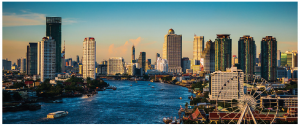
Tenth on our Top-10 list is Thailand, which received 35.4 million tourists in 2017. It is a tropical hot spot with long stretches of sandy beaches, lush islands, unique topography, archeological sites, temples and monasteries.
Thailand, formerly Siam, is the only Southeast Asian country never to be colonized; it has awe-inspiring ancient ruins that reflect the country’s unique culture and history. Several archeological sites contain relics that indicate the earliest rice cultivation in all of Asia began in Thailand.
The capital is Bangkok, which is also the most visited locale in Thailand. The most popular site for visitors to Bangkok is the Grand Palace, the official residence of the kings of Siam since 1782. Sitting on the banks of the Chao Phraya River, the palace is a walled complex of pavilions, halls, wats (temples), lavish gardens, green spaces and formal courtyards. It was the residence of the king, his court and the royal government until 1925.
Wat Pho is one of Bangkok’s most popular Buddhist temples. It houses the 46-metre Reclining Buddha. The wat is known as Thailand’s “first public university” due to more than 1,000 inscriptions about medicine, history and the liberal arts. Inscriptions about anatomy and orthopedics contributed to the development of traditional Thai massage principles.
A trip to Thailand must involve shopping. Combine it with a taste of Thai history by visiting a floating market outside Bangkok. Much of central Thailand lies in wet lowlands in broad river valleys, areas that made boats the most efficient mode of transportation and moving and selling goods. With development of the region, the area around Bangkok was drained and a system of canals created.
There are still floating markets outside the city. Although they are mostly tourist attractions rather than important parts of agricultural economies, they are vibrant and brimming with delicious food. The most popular floating market for tourists is Damnoen Saduak; most Thais prefer the Amphawa.
The Island of Phuket, with more than 30 beaches, is one of the world’s premier beach destinations. Most of the best beaches lie along the west coast — take in the sunset on the soft white sands. Phuket Town, the provincial capital, is a blend of Sino-Portuguese splendour and European and Chinese architecture. Patong, a beach and town on Phuket’s west coast, has several night markets for enjoying street food and shopping. Bangla Road is the place on Phuket for nightlife, with a noisy collection of clubs, bars and shows.
In close proximity to the coast and Phuket are many incredible little islands. Phi Phi is the most popular, though it may be too popular. The Similans are nine islands whose dive sites are among the best in the world.
Phang Nga Bay, 95 kilometres south of Phuket, is among the country’s most scenic areas. It boasts beautiful sea caves and aquatic grottoes that are best accessed by kayak. The most famous island in the bay is a sea stack called Ko Khao Phing Kan (aka James Bond Island), which has been displayed in several movies, including the James Bond flick The Man with the Golden Gun.
Epilogue
Tourism matters; it can drive economic growth and has become a main source of income in some countries, according to the UNWTO. Travellers may return home with more empathy and understanding of other peoples, and that can only be a good thing.
Laura Neilson Bonikowsky is an Alberta writer and avid traveller.



